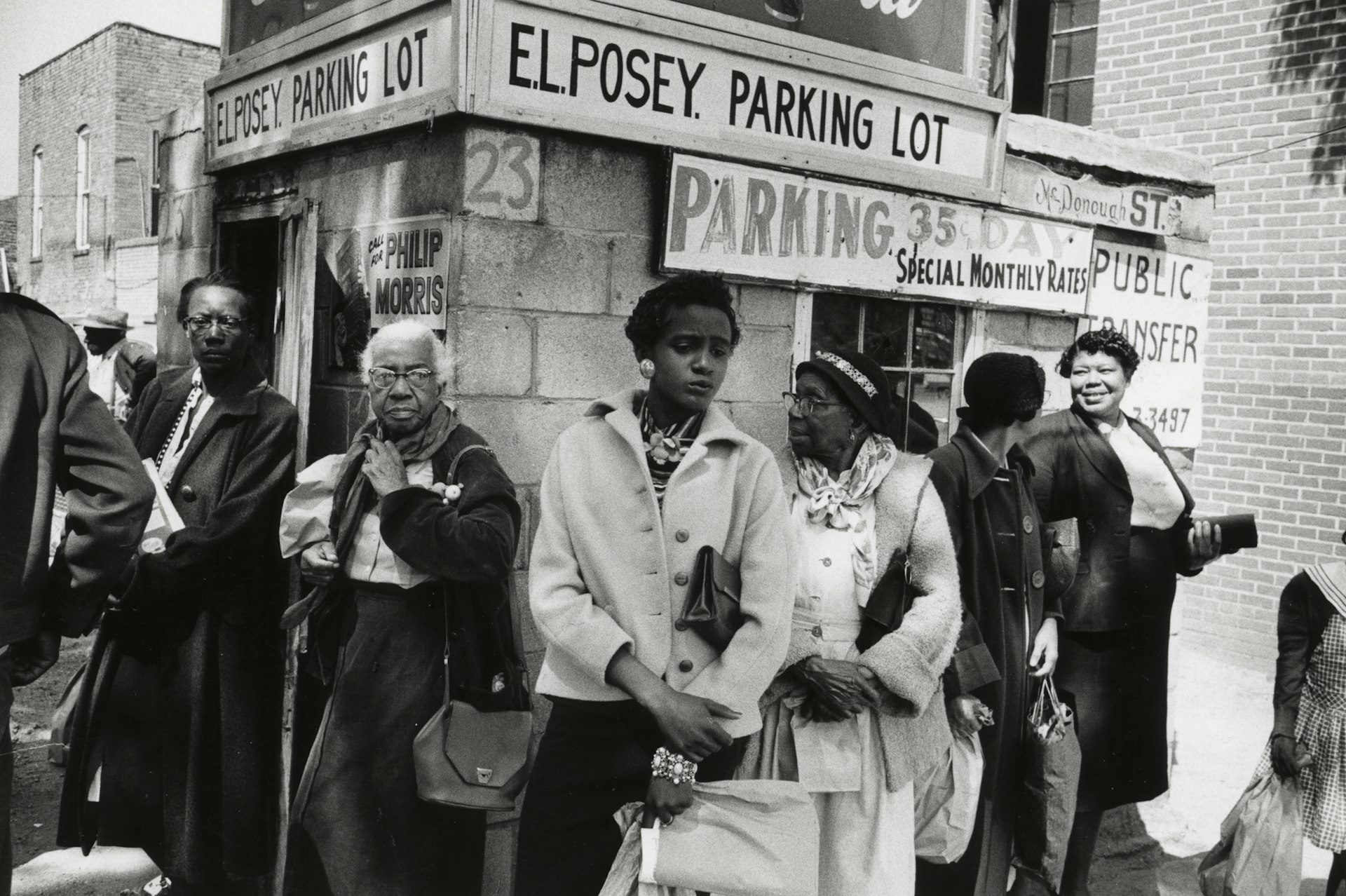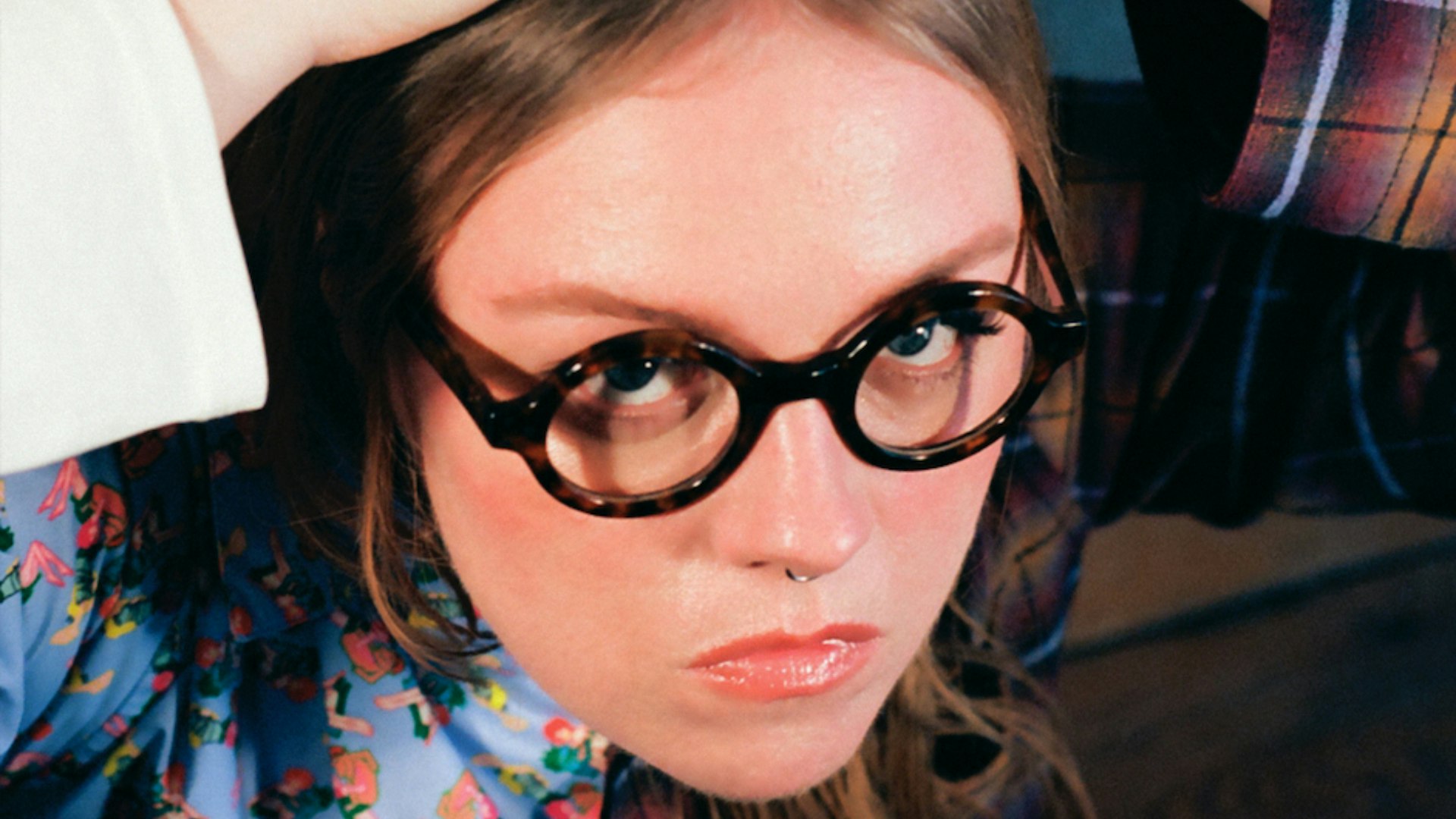Striking portraits that celebrate working class butch and stud identity
- Text by Megan Wallace
- Photography by Roman Manfredi

The first time Roman Manfredi saw themselves reflected in a gallery was upon coming face-to-face with Zanele Muholi’s Faces and Phases after a friend gave them a free ticket to Frieze London in 2010. “It was images of butch lesbians. Even though they were South African and they were Black, and that's not me, it felt like I was mirrored,” the artist recalls. “That impacted me. I’d never thought about us in those spaces before.”
Growing up in a council estate in North London in an Italian-British working class family, Manfredi didn’t have a traditional entry into the arts. Leaving school aged 16, they took the most creative job they could find listed in the local newspaper: a darkroom assistant to a local photographer. Now, with an MA from the Royal College of Art under their belt, Manfredi’s work draws from their own experiences in order to bring greater visibility to lesbian subculture, particularly butch and stud communities.
For the uninitiated, “butch” refers to a form of lesbian masculinity stemming from working class bar culture in the US. “Stud”, on the other hand, is a more recent term for Black, masculine-identified lesbians. Manfredi’s attention to these groups is partly motivated by an interaction that brought the lack of butch and stud representation – both in and out with the queer community – to their attention.
“I was at Brighton Pride a few years ago and there was a very young person in their twenties there, who was implying that butch and femme were a thing of the past. My girlfriend at the time was a femme lesbian and we had a butch/femme dynamic in the relationship, so we were like; 'Whoa, hang on a minute, what is going on? We're here? Why aren't we referenced?'” Manfredi tells me as we sit down to talk in the artist’s at-home study, the evening rain beating at the windows. “After that, I started to think that maybe I needed to create visibility around this identity and show that we don't just exist in this academic rhetoric of gender. That, actually, there are butches and studs living all over the UK.”
Now, Manfredi has been able to channel this frustration into their new project, We/Us – a photographic survey of multiple generations of butches and studs living across the UK. Co-curated by Ingrid Pollard, the project also encompasses audio work that takes the form of an oral history of the subjects’ experiences. For Manfredi, it's been a long time in the making. “We/Us comes from years and years of thinking about representation, about class, about whose voices get heard and about whose bodies get seen. Sometimes it's a seed of an idea, and sometimes it's a thorn that sticks with you and evolves.”
As the show comes to a close, we speak to Manfredi about the butches and studs living “under the gender microscope”, the shadow of Section 28 and the overlooked intersections of class, gender and queerness.


Why was it important for you to explore the butch and stud experience in relation to working class identity?
We need to think about who's talking, who's got the loudest voices, who's defining the narrative. Traditionally, that is going to be more privileged people; white people, middle class people. You have a lot of academics theorising about us and about gender performance. That's why the lived experience is very important to me, because our identities are formed by our lived experience, they're formed by our class and cultural backgrounds.
We don’t talk about class in this country and we certainly don't talk about class in the context of queer spaces. Some of the negativity around butch identity is because it comes from working class bar culture in the US. People subconsciously see the butch stereotype as a working class [stereotype]. It's not cool, it’s unattractive by white beauty standards, it’s somebody that’s not very smart. If we don't talk about it, that narrative will just continue and working class butches and studs will become more and more isolated from queer spaces – something we already feel.
WE/US is shot across the UK, what role does location and place play within the series?
I want people to know that this can only be the UK. If you look at our council estates, you look at our architecture, you look at our two-up two-down terraced houses, you can see that it's Britain. That was really important to me, because the only representation that butches and studs really have comes from the US or from history. I wanted to place us in [residential] environments because we're often only ever photographed in our underwear, in a sexualised or eroticised way, or in clubs. We do that ourselves and we need to claim that and it’s fine but you don’t expect to see us in an everyday setting.
There’s a breadth of experiences and locations showcased within the portraits featured in WE/US, but something that really struck me is the diversity in age. To what extent did you want to explore generational differences in identity?
The oldest person I've taken a portrait of is 75 and the youngest is 21. Obviously, they’re vastly different in how they came up. I think the young studs in particular, with their podcasts and their YouTubing, are really strong as a community. It's something that I really wanted to highlight in this project. On the other hand, something that I found during the project was that younger white butches don't really have a sense of themselves as butches. One in particular just said: “Well, I identify with people more from your generation.” That was an interesting thing.
On the subject of older generations of queer people, obviously many will have experienced the homophobic Section 28 first hand. What was it like living under the shadow of this legislation and what can today’s queer community learn from this era?
I mean, everybody was affected by Section 28. It’s horrendous when you look back and remember. I’d forgotten what it was like until I watched the film Blue Jean and it reminded me of what life was like back then. Now, I can go through my life and I'm not scared of attack every time I leave the house, which is what it was like at the time. I have been attacked, most of us older people have. And it wasn't just the fear of external attack, it was the internalised homophobia and how I tiptoed around certain people at work or in my family. The scary thing is, if we don't keep fighting for our rights, they can get taken away.
The show comes at a time where trans people are facing increased scrutiny and backlash, which can also impact on gender-non-conforming individuals. For you, why is it important to provide representation to butch and stud communities right now?
Obviously, there’s a hyper visibility for us because we can't hide who we are. We're very visible, we're always under the gender microscope. We’re always being asked; “what are you?” and all this, which is quite a tiring question for me. But there’s an invisibility for butches and studs that comes from the lack of mirroring in society. Do you see butch lesbians on TV? You might see some in a prison programme but, really, where are we? If there's lesbian representation, it's what I call “lesbian/lesbian” representation which is not butch/ femme or butch/butch. It’s more palatable. I think that it's getting a bit better but there are still very few films which reflect our realities, our identity or how we present.
Alongside the portraits in the exhibition, there is audio work which gives a voice and a backstory to some of the individuals featured. What prompted this multimedia aspect of the show?
I use the audio to disrupt the gaze, because of how we're consumed and the way we are defined by external things like how we’re dressed or what our haircut is. I wanted to bring a bit more of an emotional side so that we become real people, rather than identities and external surfaces. It also means that there's a richness of themes. Some people are talking about their mums and their dads, their community, but there were also instances of experiencing classism and racism. I think highlighting the differences as well as the commonality among butches and studs is really important. Because for a young white butch, discovering punky lesbians from the 1980s with spiky hair is a different experience from a young Black stud who's going to think that lesbians are white people with spiky hair. We’re not all just gay and living under a nice rainbow.
WE/US ran at Space Station Sixty-Five, London from 9 March until 3 June. A closing party for the exhibition, hosted by Sistermatic x Nite Dykez in collaboration with Brixton Village, takes place on 10 June.
Follow Megan on Twitter.
Latest on Huck

How Labour Activism changed the landscape of post-war USA
American Job — A new exhibition revisits over 70 years of working class solidarity and struggle, its radical legacy, and the central role of photography throughout.
Written by: Miss Rosen

Analogue Appreciation: Emma-Jean Thackray
Weirdo — In an ever more digital, online world, we ask our favourite artists about their most cherished pieces of physical culture. Today, multi-instrumentalist and Brownswood affiliate Emma-Jean Thackray.
Written by: Emma-Jean Thackray

Meet the shop cats of Hong Kong’s Sheung Wan district
Feline good — Traditionally adopted to keep away rats from expensive produce, the feline guardians have become part of the central neighbourhood’s fabric. Erica’s online series captures the local celebrities.
Written by: Isaac Muk

How trans rights activism and sex workers’ solidarity emerged in the ’70s and ’80s
Shoulder to Shoulder — In this extract from writer Jake Hall’s new book, which deep dives into the history of queer activism and coalition, they explore how anti-TERF and anti-SWERF campaigning developed from the same cloth.
Written by: Jake Hall

A behind the scenes look at the atomic wedgie community
Stretched out — Benjamin Fredrickson’s new project and photobook ‘Wedgies’ queers a time-old bullying act by exploring its erotic, extreme potential.
Written by: Isaac Muk

“Welcome to the Useless Class”: Ewan Morrison in conversation with Irvine Welsh
For Emma — Ahead of the Scottish author’s new novel, he sat down with Irvine Welsh for an in-depth discussion of its dystopic themes, and the upcoming AI “tsunami”.
Written by: Irvine Welsh







